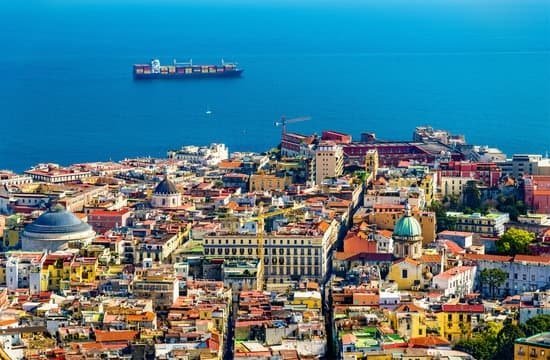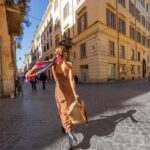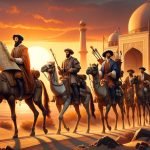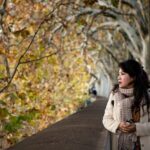
The Renaissance Era in Italy was an incredibly transformative time period ranging from roughly 1300AD to about 1550AD. This period is often characterized by profound advances in culture, politics, religion, ecology, economics and education across the Italian peninsula. Through new ideas and influences coming from Northern Europe and the Middle East, the Renaissance brought about a revolutionary change in thinking and health care throughout Europe.
Politically, the effects of Renaissance thinking can clearly be seen in Italy. This period saw a rise in cityland ownership and laws that helped to create a more fair society among its citizens. Additionally, prominent thinkers began influencing their communities by writing extensively on matters such as freedom of speech and rule of law. This gave some Italians more autonomy over their lives than before which ultimately allowed them to improve their quality of living.
Culturally speaking, Italian Renaissance was greatly influenced by humanism – a movement which focused on exploring individual human potential through studying classical literature such as Latin and Greeks works. As a result, we now see great artworks that were created out of this new understanding of beauty; namely sculptures like Michelangelo’s David and painterly pieces such as Da Vinci’s Mona Lisa just to name a few.
In addition to this, writers like Machiavelli shifted public opinion on how one should govern by criticising oppressive or tyrannical rulers while also presenting innovative concepts for achieving long-term goals with short-term tactics.
Religiously speaking, Renaissance Era impacted culture in terms of spiritual freedom within the Catholic Church as well. Thanks to reformer like Martin Luther, individuals had began questioning religious doctrine – primarily Christian belief – challenging it’s verity where need be. As a consequence, people’s interpretation of their religion began developing outside traditional systems; this increased tolerance among residents which further pushed boundaries against hegemonic power structures at play during this era.
Overall, It’s clear that the powerful impacts brought forth by renaissance ideology are still experienced today ; from massive monuments built for admiration & inspiration to legislation with continued relevance. Without doubt, the cultural, political & religious impacts stemming from renaissance thinking have positively shaped lands such as Italy, but also eventually nations all around the world.
Impact of the Medici Family on the Renaissance in Italy
The Renaissance in Italy is largely attributed to the Medici family. This powerful Italian family first rose to prominence in the 14th century due to their economic success as bankers and merchants. They quickly acquired vast wealth, allowing them to pursue other business opportunities such as land purchases and investments. Through these activities, they were able to expand their ties throughout Europe, granting them access to some of the world’s most influential leaders.
The Medici’s rise in power led to political and social influence that allowed them to shape the culture of Florence during the Renaissance era. The family was involved in almost all aspects of life in Florence; they funded dozens of massive architectural projects, initiated several banking reforms, and supported a variety of artistic movements.
However, their greatest contributions were two-fold: they groomed talented men for success, providing funding for numerous scholars and artists, but also enacted laws designed to protect the public’s health and safety. Their willingness to invest large amounts of money into the creation of artwork helped reestablish centerpieces around which commuities could rally together.
The legacy of this influential family continues through modern times; today’s biggest Art Museums have their artwork collections based on the works that were collected by the original Medicis during late Middle Ages/Renaissance era. As one of Italy’s most influential families throughout its long history, sharing greatly in shaping its culture over many generations underscored by generations addressing disease outbreaks, Public Health Acts and countless charitable efforts subsequently still acknowledged today.
Art and Architecture of Renaissance Italy
The Renaissance era in Italy is one of the most studied and celebrated periods of history. It was a period characterized by great intellectual, political, cultural and most significantly, artistic achievements. Generally considered to have begun in the 14th century and span through the 17th century, during this period various forms of art flourished including painting, sculpture, architecture and music.
Key features of Renaissance Art
Renaissance art had a major impact on European culture as it shifted away from gothic influences and took on a more humanistic approach. This period saw artists look to antiquity for inspiration with classical form of art becoming increasingly popular as techniques such as linear perspective were developed.
Other key characteristics included the use of light and shadow to create an illusion of depth and movement within the artwork, while figures were typically depicted naturalistically at full length surrounded by detailed sets or landscapes.
Art often conveyed ideas around Christianity, reflecting classical Greek mythological themes but also showed reality coming alive in everyday scenes. In sculptures, fine detail was sought-after combined with realist facial expressions. Overall these features worked together to create pieces that used idealized natural beauty in order to express emotion in a recognizable way.
Prominent works from Italian Renaissance Artists
The Italian Renaissance produced some of history’s most famous masterpieces by artists like Michelangelo, da Vinci and Botticelli who are still revered today for their work beautifully executed during this extraordinary era. Michelangelo’s sculpture “David” depicting biblical hero David stands 17 feet tall and an amongst his greatest contributions alongside his paintings in Rome’s Sistine Chapel frescoes which depict various religious stories on its interior ceiling walls; making them two of the world’s greatest iconic artworks.
Da Vinci’s “Mona Lisa” painting also stands out with its enigmatic smile commonly associated with reproductions worldwide thanks to various copies made throughout Italy since it graced its existence circa 1504-1506 as a portrait for French noblewoman Lisa Gherardini. Additionally Sandro Botticelli’s painting “The Birth Of Venus” is renowned for being both patriotic yet unifying with its classical goddess imagery set against an idyllic Italian coastline thus encapsulating earthly beauty famously inspiring it’s modern day admirers.
Architecture during this Period
During this period not only did artwork evolve but Italian architects crafted intricate structures built by skilled stonemasons; typically using limestone or sandstone blocks adorned with detailed architectural features such stone roofs composed of terracotta tiles or domed ceilings created using glazed colorful terracotta tiles invented by Filippo Brunelleschi – nicknamed “Tegole.”
Prominent examples include Florence Cathedral which constructed from 1296-1436 uses vast amounts building methods showing off flying buttresses creating geometric patterns along its exterior walls due to alternating red-green bands present upon the sandstone resulting beautiful façade later adopted after during Baroque Architecture common across Europe while Giotto bequeathed 6 charming Campanile bells completed 1334 bringing brilliance Florence skyline.
Prominent Figures in Italian Renaissance
The Italian Renaissance of the 15th and 16th centuries marked a crucial turning point in history. It was a period which saw tremendous advances in art, literature, and architecture – all thanks to pioneering figures such as Leonardo Da Vinci, Michelangelo, and Raphael.
Leonardo Da Vinci was a true “Renaissance man”. He wrote prolifically on subjects as diverse as engineering and music theory. His exquisite drawings and paintings have inspired countless later works of art – most notably being the Mona Lisa. Above all else though, he is remembered for far-sighted scientific observations which anticipate great leaps in technology until present day.
Michelangelo was one of the greatest sculptors of all time – with excellent examples such including David and Moses. Unlike other artists from during that period however, his sculptural works were more independent projects rather than commissions for churches or wealthy patrons. He distinguished himself from competitor artists by producing ambitious marble pieces which featured a larger than life size scale coupled with fine details such as intricate poses and facial expressions which ultimately pushed past any ordinary artistic boundaries.
Raphael left behind him an inclining legacy of knowledge that still fills minds with admiration today. An example being The School of Athens where he encapsulated so many iconic figures discussed within philosophy, politics, science, etc – plus his visualized representation of utopia in Lord’s Supper has held steady despite the tests of time as perhaps one of the world’s greatest masterpieces ever assembled.
Through his blend exploration between religion & human lifestyle exposed the necessity for understanding current societal values paired open mindedness while setting standards for design organisation concepts – even up until today.
Contributions List Of Prominent Figures
- Leonardo da Vinci: Advancement in arts & sciences (especially Engineering), acclaimed painting “Mona Lisa”.
- Michelangelo: Finest sculptor who excelled with ambitious large-scale projects featuring fine detail.
- Raphael: Visualised Utopia through ‘Lord’s Supper’ & pioneered exploring between religion & society; developed design standards.
Achievements and Innovations in Literature, Science, and Music
The Italian Renaissance was a period of great intellectual, artistic, and scientific achievements. Literature became increasingly secular during the period, with works such as Dante Alighieri’s “Divine Comedy” and Boccaccio’s “Decameron” becoming widely popular. Petrarch’s “Canzoniere”, a book of love poetry, was most influential in spreading the ideas of humanism throughout Europe. The Italian language also benefited from the Renaissance era. Scholars evolved its grammar structure and usage of words as literature flourished.
In science, Ptolemy’s theories were explored further by scholars during the Italian Renaissance such as Galileo Galilei who proposed a heliocentric model of the solar system which contradicted ancient beliefs about an Earth-centered universe. Leonardo da Vinci is one of the most famous scientists to have lived during this time; he is credited with creating many advances in anatomy, physics, astronomy, engineering, chemistry and mathematics.
He made detailed studies on flight and constructed a mechanical lion that could walk independently.
Finally, music experienced great development during this period in Italy through its use within opera or madrigals and instrumental music such as concertos or sonatas written by numerous composers distinguishing each other by style and nationality:
- Josquin des Prez
- Giovanni Pierluigi da Palestrina
- Claudio Monteverdi
- Arcangelo Corelli
- Antonio Vivaldi
Many new musical features emerged during this time such as imitative polyphony (rely on imitation between voices), increased use of dissonance (conflict between two notes), contrasting movements in larger works (alternating loud/soft) or continuous instrumental accompaniment along with vocal parts (concertato). In addition, improvisation was more commonly used both in vocal music or keyboard instruments such as clavichords and organs.
Instrumental music generally improved due to better composition techniques for larger ensembles lead by conductors or maestros in what later came to be known as orchestras.
The Spread of Humanism during Italian Renaissance
The Renaissance period (14th-17th centuries) was a period of great cultural and artistic flourishing in Europe, and particularly in Italy. Humanism was one of the most distinctive aspects of this era which deeply shaped the intellectual life of the time. At its core, humanism was an intellectual movement which rejected religious and spiritual authority as a source of knowledge.
Instead, it embraced the individual’s potential to think rationally and to pursue knowledge through their own experiences. This focus on individual reason helped to promote scientific advancement during the Renaissance.
Italians embraced humanism with particular passion due to its focus on individual experience, and due to their appreciation for art and cultural expression. The works of scholars such as Francesco Petrarch served as important primers in developing humanist thought in Italy during this time. Petrarch influenced an entire new wave of Italian scholars who drew inspiration from classical Greek and Latin texts as a source material for their own writings on subjects such philosophy, art, politics, history, science etc.
One figure believed by many to be emblematic of this humanist ideal was Leonardo da Vinci who is widely credited for inspiring an entire generation of Italian artists – not just painters but also sculptors and architects – who initially latched onto his ideas before eventually developing their own styles.
From here further spread could be observed; even those not formally involved in culture production can still observe how concepts espoused by this movement were ingrained into by daily life – appearing everywhere from homes to churches across Europe where people adopted new approaches towards cultivating knowledge apart from religion or authority.
This full embrace would come over time; yet there can be no doubt that it found its origins during the Renaissance period when humanism truly bloomed within Italy itself before going on to have a lasting impact far beyond the country’s borders.
The Decline of the Renaissance in Italy
Political Factors
The decline of the Renaissance in Italy was largely due to some political factors. It is widely accepted that the dysfunction at the heart of political policy in Italy was one of the key reasons that led to this phenomenon. By the beginning of 16th century, much of Italy had fragmented into a state of disarray with numerous local ‘city-states’ operating under different systems and regulations.
This decentralisation, coupled with major internal conflicts, led to increased dynastic warfare and intense competition between these city-states as they fought for resources and land. Ultimately, this situation left several significant powers in Europe that owed their success more so to their own interests rather than expressing an Italian spirit or collectivism.
Economic Factors
The decline in trading activities allocated to overseas journeys crippled Italy’s economy during this period. Although the country had seen consistent growth over recent centuries, such export activities now struggled-mostly due to rising competition from other regions like Germany and France while also being impacted by financial insecurity worsening after the collapse of Roman papacy. In addition, any imported woollen cloths were heavily taxed by inhabitants further impeding trade and drastically reducing economic productivity within Italy.
Cultural Factors
During these last decades of Italian Renaissance, there was an all-rounded improvement in education capacities but also a shift towards non-classical topics ranging from anthropology, religious trends and philosophical discourses which were highly contentious at times and often formed discord among members of society using irrevocable language.
These controversial approaches carried out by certain artists like Michelangelo oftentimes upset influential members belonging to leading families weakening efforts towards moderation while simultaneously pushing away potential diplomatic ideals or comparable civil ideas needed for common welfare motivations absent amongst feuding nations within Italy itself.
Impacts of the Renaissance on Modern Society
The Italian Renaissance has had a lasting and meaningful effect on the world in which we live. Coming out of the Medieval era, the Renaissance period greatly pushed forward advances in art, science, literature, and politics that continue to shape our lives today. In art, Italy fostered an ambitious group of painters and sculptors who expressed their creativity through works that truly captured human emotion for the first time.
This movement saw a shift from the use of religious iconography to individual portraits, still lifes and landscapes. We still draw upon elements of these artists’ works in our own depictions today.
In terms of science, Italian scholars began to move away from archaic ideas such as Aristotelian cosmology in favor of more empirical research involving mathematics and experimentation. This allowed for advances such as improved understanding of anatomy and gravity to take place. Additionally, humanism became a key factor during this period thanks to thinkers like Petrarch whose philosophical ideas focused on human achievement instead of divine intervention – many modern concepts use this same spirit today.
The political power wielded by two major states during this period – Florence and Venice – took Italy’s economy into a period of resurgence as large increases in trade balances increased wealth across interests groups associated with those cities. In addition to encouraging international growth between cultures, merchant banking emerged during this time period which included innovations such as double-entry bookkeeping that are now staples of modern business management.
Moreover, philosophers like Machiavelli wrote treatises about political ideologies that have helped shaped nation-states up until this day.
It is clear that although over 500 years have passed since the beginning of Italian Renaissance times, its mark still remains deeply instilled within our society. From the artistic expressions we see around us to underlying foundations enshrined in our socio-economic practices; we owe much to what occurred during those times.




